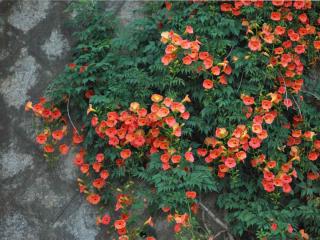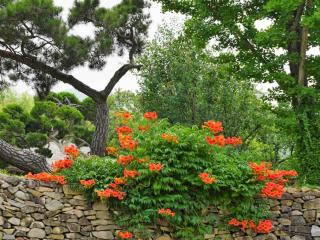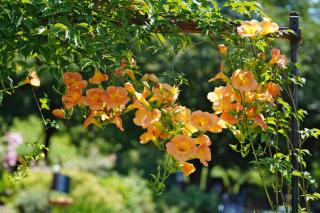

Hummingbird vine, which also goes by the name Virginia jasmine, is a vine that is simply beautiful and it blooms all summer long.
Hummingbird vine basic facts
Name – Campsis
Family – Bignoniaceae
Type – climbing vine
Height – 16 to 32 feet (5 to 10 m)
Exposure – full sun
Soil – rather rich, cool and well drained
Foliage: deciduous – Flowering: summer to mid-fall depending on climate
Its flowers are shaped like orange or red trumpets, and they’ll decorate your garden up to the first frost spells.
It is recommended to plant hummingbird vine in fall but it can also be planted in spring as long as you remember to water more often at the beginning.
You may also plant in summer if you’re able to water regularly and avoid heat waves.

Pruning isn’t mandatory at all, but it might be needed if your hummingbird vine grows too large.
Indeed, hummingbird vine is a vigorous plant that must sometimes be cut back and restrained.

As for maintenance pruning, best to prune the sprigs that have succumbed to frostbite at the end of winter, they won’t grow back. This usually concerns the tip of the branches, about sixteen inches (forty centimeters).

Its opaque leafage makes it great solution to cover an ugly old wall of hollow blocks or cement, to decorate a tree trunk or simply make a garden shed, pergola or old barrel look alive.
Hummingbird vine is very hardy since it can survive temperatures down to 14°F (-10°C) or 5°F (-15°C).
Although it generally is very resistant to diseases and parasites, let us mention that aphids and red spider mites occasionally appear on the plant. This rarely leads to devastating damage.
During heat waves, apply water often in small amounts in the evening.